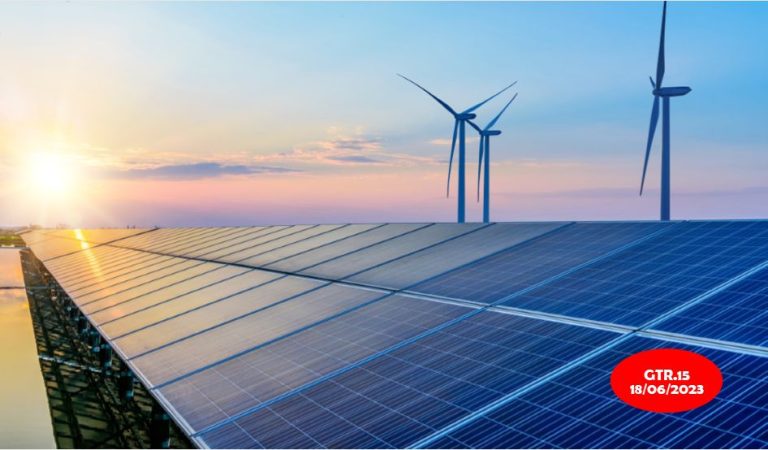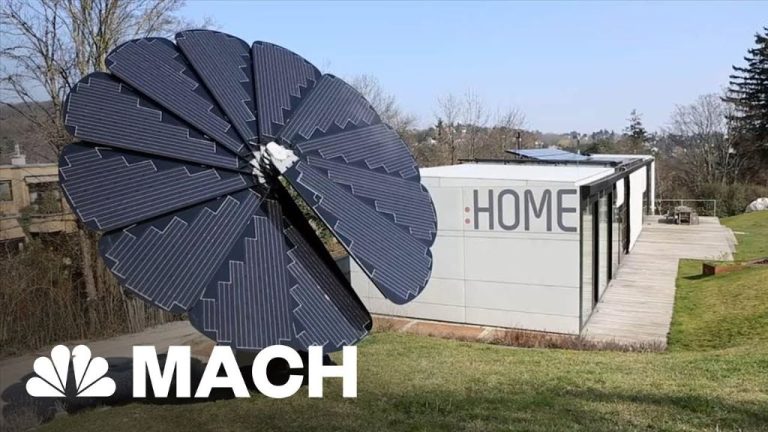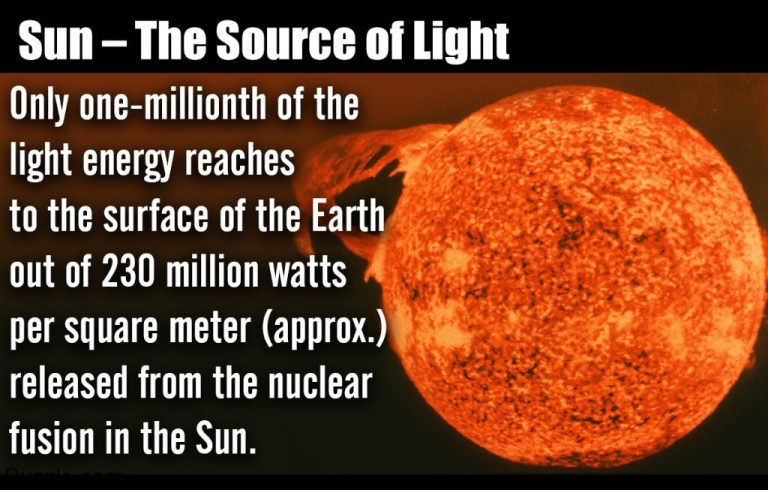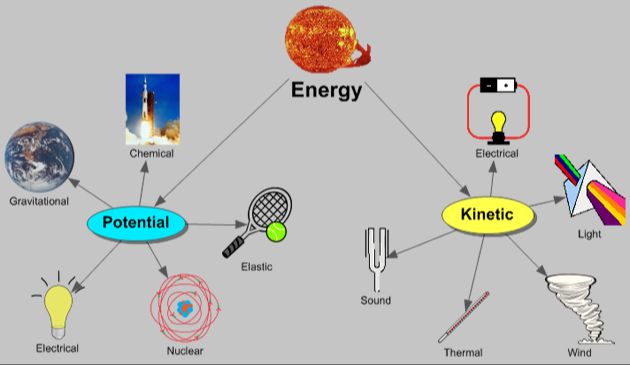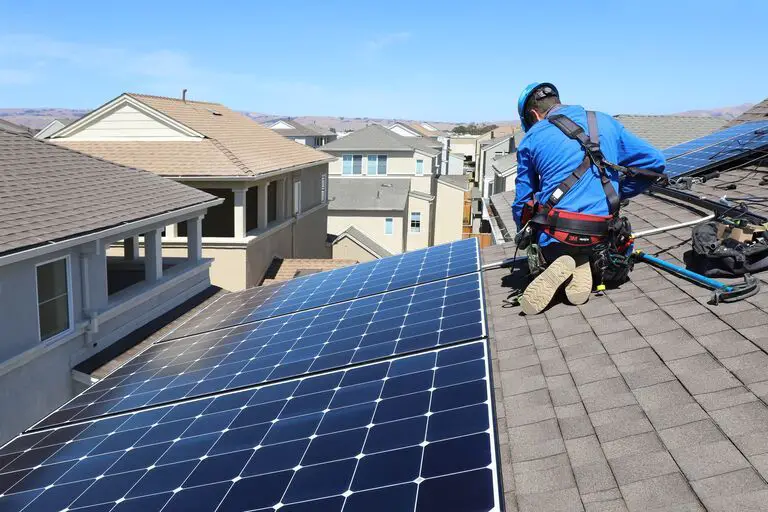Will Solar Become 35 Cheaper By 2024?

Prices for solar panels have fallen dramatically over the past decade. According to NREL, module prices have declined by 85% in the last 10 years. The average cost to install residential solar has dropped from over $7 per watt in 2010 to around $2.70 per watt today. There is now a goal to reduce solar costs further, by 35% between 2020 and 2024. Hitting this target would bring the average residential solar installation cost down to around $1.75 per watt. This would make solar even more affordable and continue the massive growth in solar adoption seen over the past decade.
Current Solar Panel Prices
The average cost of solar panels in 2024 for residential systems is between $2.50-$3.50 per watt, while utility-scale solar prices range from $0.80-$1.20 per watt, according to the most recent industry data. On a system-level, a typical 5 kilowatt residential solar array costs $12,500-$17,500 before incentives, while a large 100 megawatt solar farm can be built for $80-$120 million.
For homeowners, the average price to install rooftop solar has come down significantly thanks to improvements in panel efficiency and lower hardware costs. According to the National Renewable Energy Laboratory (NREL), the median upfront price of residential solar in 2021 was around $2.80 per watt (Source 1). However, costs can vary across states and local markets.
Utility-scale solar prices have declined even more dramatically over the past decade. NREL data shows the average U.S. utility solar PPA price dropped to about $0.90 per watt in 2020, an 86% reduction since 2009 (Source 2). This makes solar cost-competitive with fossil fuels for electricity generation in many regions today.
Factors Driving Down Solar Costs
There are several key factors that have driven down the costs of solar panels over the past decade and are projected to continue reducing prices through 2024:
Improving panel efficiency – Solar cell efficiency has steadily improved, with lab cell efficiencies now over 47% compared to around 15% a decade ago. More efficient panels mean less panels and area needed for the same output, reducing system costs. Manufacturers like SunPower and LG produce panels over 22% efficient. According to a source, higher efficiency panels will become increasingly common by 2024.
Manufacturing improvements – Economies of scale, automation, and process optimization in manufacturing have significantly reduced production costs per watt. Major expansions of low-cost manufacturing capacity in Asia has enabled high volume production. Soft costs like permitting, installation labor, supply chain costs, and customer acquisition are also declining with greater scale and competition.
Soft costs reductions – Non-hardware costs like permitting, grid interconnections, installations, and financing account for over half of total system prices. These costs are falling due to market growth, improved processes, and fierce competition between installers. Innovations like online permitting and design tools also help reduce soft costs.
[1] https://www.cnet.com/home/energy-and-utilities/why-the-cost-of-solar-panels-will-likely-keep-falling/
[2] https://arka360.com/ros/solar-panel-prices-decline/
[3] https://www.cnet.com/home/energy-and-utilities/should-you-wait-to-buy-solar-panels/
Projected Cost Reductions
The cost of solar energy is predicted to continue declining rapidly through 2024. According to a report by Climate Energy Finance, module prices may reach as low as $0.10 per watt by the end of 2024, down from around $0.20/W in 2023 (source). This dramatic price decline is driven by economies of scale as production expands, improvements in manufacturing efficiency, and advances in solar cell and panel technology. Solar industry experts project total installed system costs falling 35-40% by 2024 compared to 2022 levels.
The Department of Energy has set cost reduction targets of $0.05/kWh for utility-scale solar and $0.07/kWh for commercial rooftop solar by 2030. Based on current projections, these cost targets could potentially be met or exceeded by 2024. This would make solar cost-competitive with conventional electricity generation across most of the United States without subsidies. Lower solar costs open up new markets and accelerate adoption.
Further cost declines beyond 2024 are expected but will likely happen at a slower pace as the technology matures. However, experts point to continued opportunities from improved manufacturing techniques, larger-scale deployments, and new technologies like perovskite solar cells. Innovations like solar windows, paint-on solar coatings for buildings, and solar roads also have the potential to dramatically expand the addressable market and drive costs down through economies of scale.
Challenges to Further Cost Declines
While solar costs have fallen dramatically in the past decade, there are some potential headwinds that could slow further declines. Supply chain disruptions, trade policies, and tariffs may present challenges.
The Covid-19 pandemic exposed vulnerabilities in solar supply chains, with lockdowns in parts of China and Southeast Asia impacting production of polysilicon and other components (1). These disruptions led to shortages and price increases for some parts of the solar supply chain. Getting supply chains running smoothly again will be important for controlling costs.
Trade disputes and tariffs also have the potential to increase solar costs. The U.S. imported many solar components from China in the past, but tariffs as high as 200% were imposed on Chinese-made solar panels from 2018 to 2022 (2). While the tariffs have now been lifted, lingering trade tensions could potentially lead to new barriers. Keeping global markets open will help solar manufacturers benefit from economies of scale and cost reductions.
In addition, the expiration of solar tax credits in the U.S. could reduce demand and slow cost declines. However, continued technological improvements and market growth worldwide are expected to counteract these challenges and enable costs to keep falling (2).
(1) https://www.cnet.com/home/energy-and-utilities/why-the-cost-of-solar-panels-will-likely-keep-falling/
(2) https://www.dataforma.com/challenges-facing-the-solar-industry-right-now/
Impact of Storage Costs
As solar energy costs continue to fall, batteries are emerging as an important complement to solar installations. By storing excess solar energy for later use, batteries allow solar power to be dispatchable and available 24/7. According to analysis by BloombergNEF, lithium-ion battery pack prices have fallen to a record low of $139/kWh in 2023, down from over $1,100/kWh in 2010 [1]. Further declines are projected, with some estimates suggesting battery storage costs could reach $100/kWh or lower by 2024 [2]. Lower storage costs improve the value proposition of solar+storage systems for utilities and commercial customers.
The National Renewable Energy Lab (NREL) projects the installed costs of 4-hour battery storage declining to $245-$403/kWh by 2024, down from $338/kWh in late 2021 [3]. With storage costs falling in tandem with solar generation costs, solar+storage is becoming increasingly competitive for grid applications. However, continued declines in storage costs are needed to fully realize the potential of solar to supply dispatchable renewable energy.
New Solar Technologies
Emerging solar technologies like perovskites have the potential to greatly reduce costs in the coming years. Perovskites are a new type of solar cell material that researchers say could be more efficient and cheaper than traditional silicon solar panels.[1] Companies working on commercializing perovskite-silicon tandem solar panels say combining the two materials leads to higher efficiency. Perovskites alone convert over 25% of sunlight into electricity, while tandem perovskite-silicon cells can exceed 30% efficiency.[1]
The improvements in efficiency with perovskites means panels would produce more electricity using the same amount of material, reducing overall costs. Additionally, the perovskite layer can be made using lower temperature processes and inexpensive materials like lead, lowering manufacturing expenses.[1] If perovskite solar panels can reach commercial scale production, analysts predict they could lead to panels that are 25-30% cheaper than traditional silicon solar by 2030.[1]
Market Growth Potential
Solar power capacity is projected to grow substantially worldwide and in key markets like the United States in 2024 and beyond. According to talkbusiness.net [1], solar generation in the US is expected to rise 39% from 2023 levels, with 37 gigawatts of new solar capacity coming online. The Solar Energy Industries Association predicts the US solar market will grow 17% annually through 2030. Other major markets like China, India, Europe, and Australia are also projected to see strong solar growth.
The growth is driven by improving economics as solar costs continue to fall, favorable policies and incentives, corporate procurement, and the overall global transition towards renewable energy. Key factors enabling growth include technological improvements, manufacturing scale and supply chain development, soft costs reductions, and innovative financing options. While challenges remain, the outlook is for solar to continue its rapid growth in the coming years.
Policy Support Needed
Continued government policy support will be critical for the solar industry to meet aggressive cost reduction goals by 2030 and beyond (DOE Announces Goal to Cut Solar Costs by More than Half …). Tax credits, rebates, and other financial incentives help lower the upfront costs for homeowners and businesses to adopt solar power. These incentives make solar energy more financially viable and drive increased demand, which enables companies to scale production and reduce costs through economies of scale. Government research and development funding also plays a key role in bringing new solar technologies to market that can drive step changes in efficiency and cost (2030 Solar Cost Targets).
However, some incentives like the federal solar investment tax credit are scheduled to phase down in the coming years. The solar industry argues these supports must be extended or replaced to provide market stability and policy certainty. Without consistent incentives and favorable market conditions, it may be challenging for the industry to achieve the technical and cost breakthroughs projected in government roadmaps. Continued policy support along with public and private investment will be essential to unlock solar’s full potential as a low-cost, mainstream energy source.
Conclusion
Based on the analysis presented, it does appear achievable for solar panel costs to decrease 35% by 2024. The average prices of residential and utility-scale solar have dropped dramatically over the past decade, declining over 70% since 2010. Key factors driving down costs have been improvements in solar cell efficiency, manufacturing scale and automation, and balance of system component optimization. These trends are projected to continue, with leading analysts forecasting an additional 35-40% reduction in solar PPA pricing by 2024.
There are risks that could potentially slow the pace of cost reductions, such as supply chain constraints, trade policy changes, and softening demand once equivalence with wholesale power prices is reached. However, the solar industry has historically exceeded projections and proven capable of reliably cutting costs year after year. With continued technology advances, economies of scale, and supportive policies, solar appears well-positioned to achieve a 35% cost decrease within the next few years.
Overall, the outlook is very positive for solar to continue on its trajectory as one of the lowest cost and most rapidly deployed energy sources worldwide. While the exact magnitude of near-term cost declines contains uncertainty, a 35% reduction by 2024 is within reach based on projected learning curves and the strong track record of innovation by solar manufacturers and installers seeking to expand adoption.

